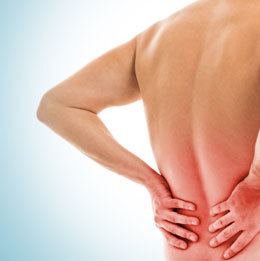
Millions of Americans suffer from acute or chronic pain, which equates to billions in health care costs. Some of the most common pain complaints are related to the spine—in fact, according to the American Academy of Pain Medicine, back pain is the leading cause of disability in Americans under 45 years old, and more than 26 million Americans between the ages of 20 and 64 experience frequent back pain.
While many patients feel hopeless when they are unable to manage their pain with typical medicines or treatments, these days, there are many options. The key to successful treatment is being evaluated early on, says Dr. Michael Sabia, division head of pain management and anesthesiologist with Cooper University Health Care.
“Being evaluated early on will get you on the right track and is really important,” Sabia says. “There are many treatment options, but sometimes those options become fewer if you wait.”
Ironically, some patients hold off on seeing a doctor out of fear that they’ll require surgery. But Sabia says the sooner you can get in, the better.
“You don’t want to wait so long that surgery becomes your only option,” he adds. “Oftentimes, patients are candidates for physical therapy or certain injections early on. But many problems can snowball and become bigger with time. Early evaluation is absolutely key.”
Treatment options
Dr. Kimberley Y. Smith, pain management specialist with Premier Orthopaedic Associates, agrees, noting there are other options available besides surgery for patients with back pain. She says these include nerve blocks, joint injections, epidural injections and trigger point injections.
“A lot of patients are surprised to learn that injections can actually be done with Botox to treat pain,” Smith says. “A lot of people know of Botox being used for wrinkles, but it has also been used to treat children with cerebral palsy. In cerebral palsy the muscles are very tight, and Botox can treat those muscle spasms. Sometimes it’s also an effective treatment for other muscular pain we see.”
Some patients have had shots in the past and have been discouraged that they didn’t work, Sabia says. But it’s important that they not give up hope right then and there, he stresses.
“There are close to 40 different types of nerve blocks out there—in other words, so many different ways to approach a patient’s pain,” Sabia explains. “We’ve also seen patients who say they had an epidural in their past and it didn’t help them. I want patients to know that not all shots are created equal. And perhaps a shot isn’t even what they need. Just because something didn’t work for them in the past does not mean we can’t find a treatment option that will work in their future.”
Another treatment option for chronic back pain is DTS spinal decompression therapy, a new and innovative technique that one might not associate with chiropractic care.
At O’Keefe Chiropractic Center, Dr. Michael J. O’Keefe has been using DTS spinal decompression therapy for many patients with chronic pain. In this non-surgical treatment, a computer-modulated traction device is programmed to deliver a gentle stretching force to the spinal vertebrae. The process is so gentle that most patients report feeling only a subtle stretching, if anything, O’Keefe says.
“Doing spinal decompression therapy relieves pressure on the nerves and spinal cord,” he explains. “It’s offering a solution to patients with disc problems from degeneration or herniation who previously thought their only option was surgery.”
In addition to DTS spinal decompression therapy, O’Keefe Chiropractic Center has recently implemented acupuncture, which is also proving to be effective for back pain. “Acupuncture is a modality of treatment that is helpful for many health conditions, not just back pain,” O’Keefe says. “But specific to back pain, the World Health Organization has stated that through clinical trials, it’s been determined acupuncture is an effective treatment for those with back and neck pain, as well as sciatica.”
During an acupuncture treatment, very thin needles are inserted into the skin to alleviate pain. Originating in ancient China, acupuncture is now widely practiced. At O’Keefe Chiropractic Center, Dr. Bibo Zhang is the practicing acupuncturist. Zhang was trained in China and practiced at a Chinese hospital before coming to the United States and receiving a chiropractic degree. While many patients may be apprehensive about trying acupuncture, O’Keefe says it’s a pain-free experience.
“We have treated patients of all ages and had no complaints about discomfort,” O’Keefe says. “Patients are a bit nervous about it their first time but are always pleasantly surprised.”
Calling the pain specialist When a patient isn’t getting answers or solutions to their chronic pain, it can be frustrating, pursuing options to no avail.
But a pain management specialist is trained to look for the answer.
“We not only deal with acute pain, but also subacute and chronic pain,” says Smith. “And we’re trained to recognize something that will get better in time versus something that needs immediate treatment—and what level of treatment is required. Pain is our specialty.”
In modern medicine, pain has become a very focused specialty, Sabia adds. Pain is so specialized that even after medical school, pain doctors receive special training.
“The tools we, as pain specialists, have are much more broad and we can offer you more than just medication,” Sabia adds. “It’s not uncommon for patients to wind up on strong pain medications because that seemed like the only answer, but we are trained to go deeper and to explore the options when it comes to pain.
Sabia adds that the solution may not always lie with him, or another pain management specialist. “I take a team approach to treating pain,” he says. “I have the connections to get patients in with the specialists they may need, depending on the root of their pain. The first thing we need to determine is the cause. Once patients know what’s causing their pain, they often feel a lot better even to just have some answers.”
Published (and copyrighted) in South Jersey Magazine, Volume 12, Issue 6 (September, 2015).
For more info on South Jersey Magazine, click here.
To subscribe to South Jersey Magazine, click here.
To advertise in South Jersey Magazine, click here.











